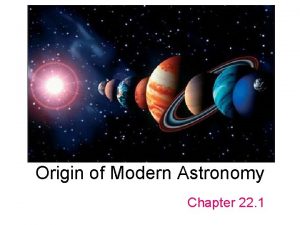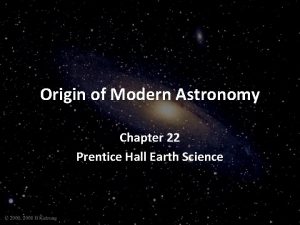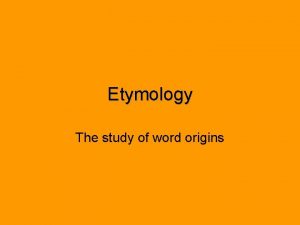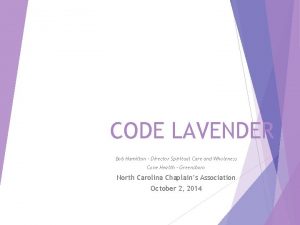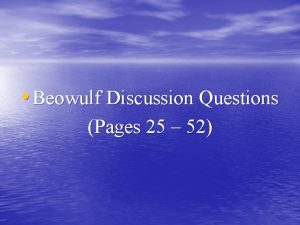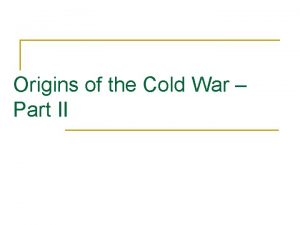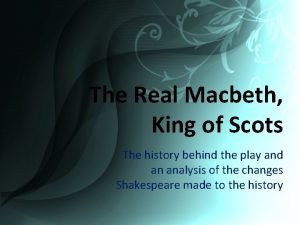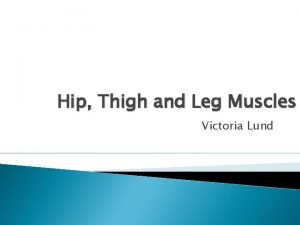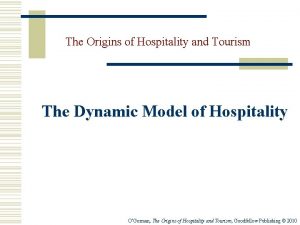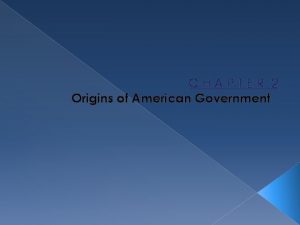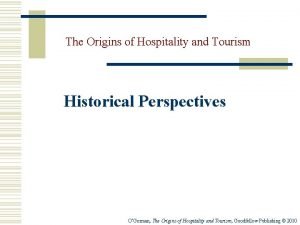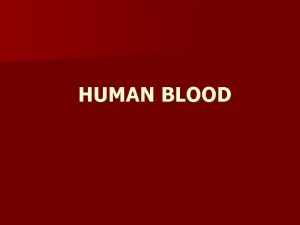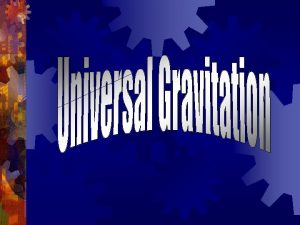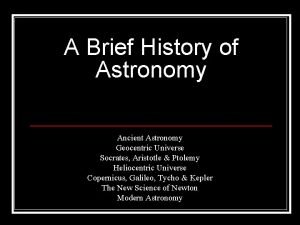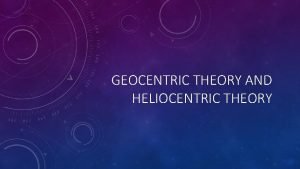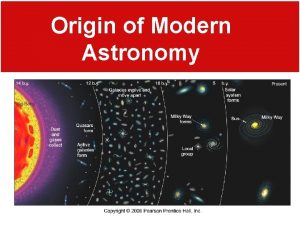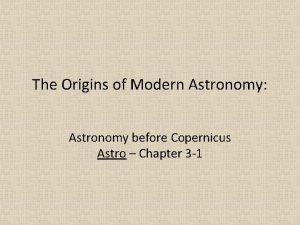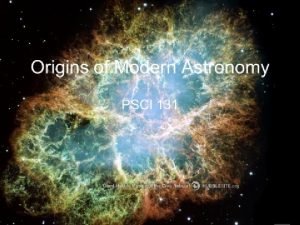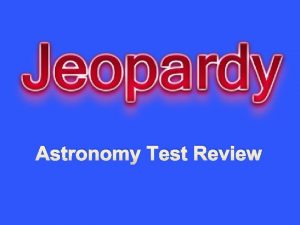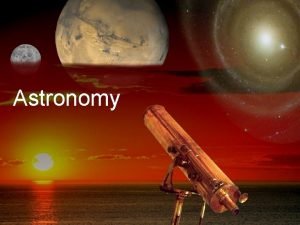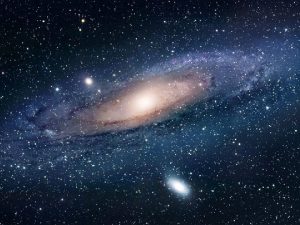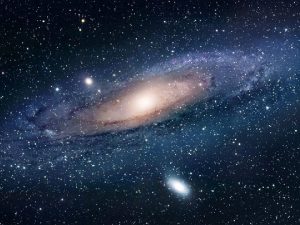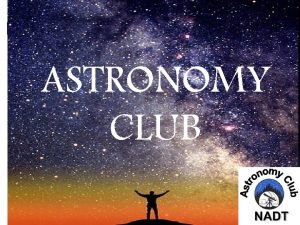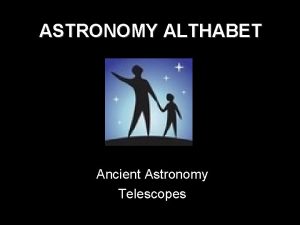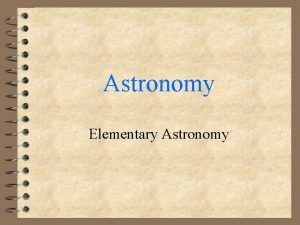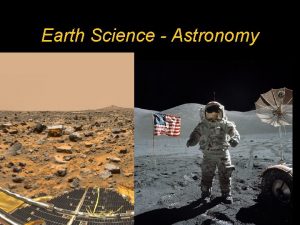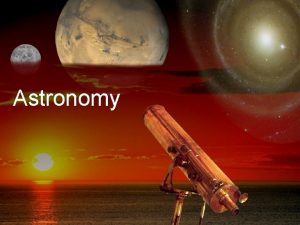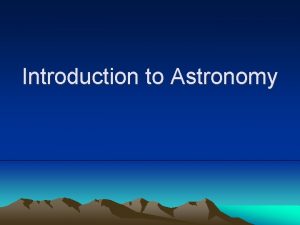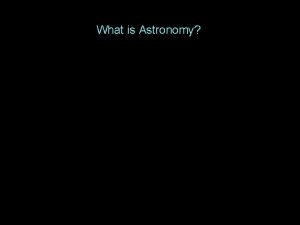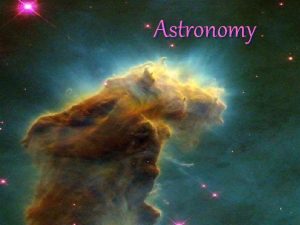Origins of Modern Astronomy OR EarthCentered Geocentric vs

























- Slides: 25

Origins of Modern Astronomy OR Earth-Centered (Geocentric) vs. Sun-Centered (Heliocentric) ?

Why a Geocentric Universe? • The Earth does not feel like it is moving. • All objects in the sky appear to revolve around us. • It’s comforting to think we are so important.

A Strong Point in Favor of the Geocentric Model… there is no observed parallax. June Dec.

A Major Problem for the Geocentric Model… Retrograde Motion of the Planets The Path of Mars across the night sky… Mars Retrograde

This was explained by Ptolemy, using epicycles, orbits on top of orbits: Animation

Copernicus: The Sun-Centered Universe The Polish astronomer, Copernicus, believed that Ptolemy’s model was too complicated, so he proposed the heliocentric model of the universe….

By having planets, including the Earth, revolving around the Sun, the epicycles are eliminated.

In the heliocentric model, retrograde motion is explained by the Earth passing a slower planet. Animation

Jupiter’s Retrograde Motion May 2007 2008 Sept. August Nov. Sept. Nov. 2008 2007 • It takes Jupiter 12 years to revolve around the sun. • Every Earth-year it goes through one Zodiac constellation. • When the Earth passes it, Jupiter “falls backward, ” and then resumes its prograde motion. June 2007 February July Oct. Dec. 2007 2008

Jupiter 2006 -2018 • Each year Jupiter moves slowly to a new constellation in the zodiac. • During this time is goes through a retrograde stage when the Earth passes it. 2006 2007 2008 2009

Enter Galileo with the first physical evidence of a heliocentric universe! THE TELESCOPE

The telescope greatly improved our ability to observe the universe

There are too many stars to be “pasted on” one sphere.

Galileo discovered that Jupiter had moons of its own a mini-Solar System, independent of the Earth Jupiter 4 moons

More significantly, he discovered that Venus goes through phases like the Moon.

This is difficult to explain with an earth-centered universe. Sketch made by Galileo: The crescent Venus is much larger, since it is closer to Earth

Tycho’s Compromise • Danish astronomer Tycho Brahe was a superb observer of the heavens. • He didn’t observe any parallax, so he kept the Earth in the center. • Other planets revolved around the Sun, as it revolved around us.

Mathematical Evidence: Johannes Kepler

Kepler studied the records of planetary positions and came up with three laws…

Law #1: All the planets travel around the Sun in elliptical orbits.

Law #2: Planets move faster as they get near the Sun, slower when farther away Equal Area Ani. A 1 = A 2 Animation

Law #3: The distance of the planet to the sun cubed is equal to the period of revolution squared: D 3 = P 2 For Mars: D = 1. 5237 AU and P = 1. 881 years (1. 5237)3 = (1. 881)2 = 3. 538

Finally, there was Sir Isaac Newton, whose Laws of Gravitation proved the heliocentric model.

Orbits in a cone Newton was able to show the forces of gravity and the inertia of moving planets produces a Solar System.

Quiz! 1. Why did the geocentric view hold on so long? 2. Who plotted out the epicycles for the known planets? 3. How did Copernicus, Galileo, and Kepler help promote the heliocentric model of the universe? 4. What was Newton’s contribution?
 Learning astronomy by doing astronomy activity 7 answers
Learning astronomy by doing astronomy activity 7 answers Learning astronomy by doing astronomy
Learning astronomy by doing astronomy Learning astronomy by doing astronomy activity 1 answers
Learning astronomy by doing astronomy activity 1 answers Origin of modern astronomy
Origin of modern astronomy Johannes kepler
Johannes kepler The origins and spread of christianity
The origins and spread of christianity What is katniss’ prediction as she readies herself?
What is katniss’ prediction as she readies herself? Study of word origins
Study of word origins Chapter 26 section 1 origins of the cold war
Chapter 26 section 1 origins of the cold war Earl bakken quotes
Earl bakken quotes Origins of american government section 1
Origins of american government section 1 Origin
Origin Thisisis
Thisisis Halloween has its origins in which ancient celtic festival
Halloween has its origins in which ancient celtic festival Grendel setting
Grendel setting Map of the vikings travels
Map of the vikings travels Origins of the cold war
Origins of the cold war Greek theater history
Greek theater history Real macbeth
Real macbeth The origins of sociology
The origins of sociology Hamstring insertions and origins
Hamstring insertions and origins The origins of hospitality and tourism
The origins of hospitality and tourism Chapter 2 origins of american government worksheet answers
Chapter 2 origins of american government worksheet answers The origins of hospitality and tourism
The origins of hospitality and tourism Where did hinduism originate
Where did hinduism originate Blood type map
Blood type map



